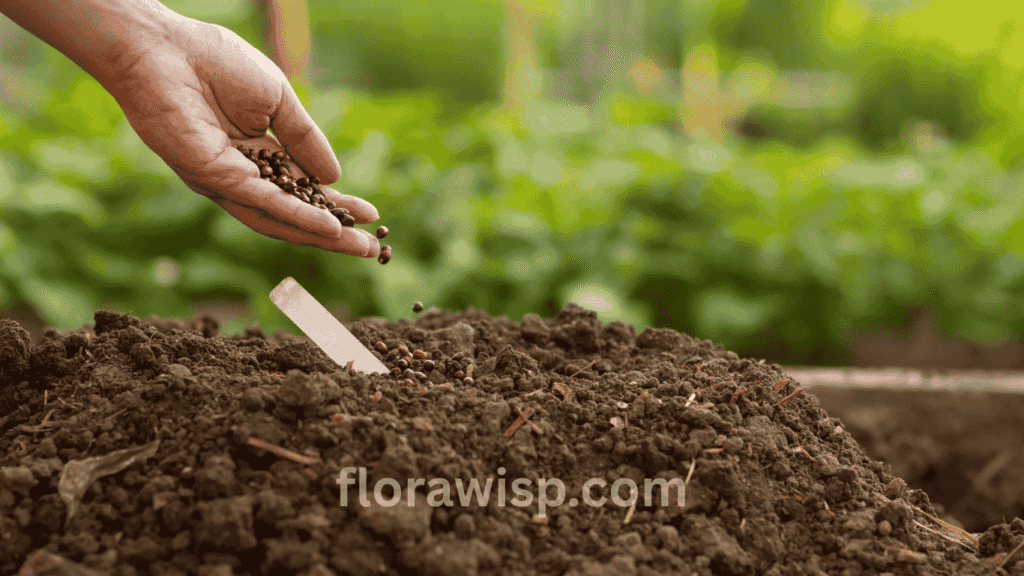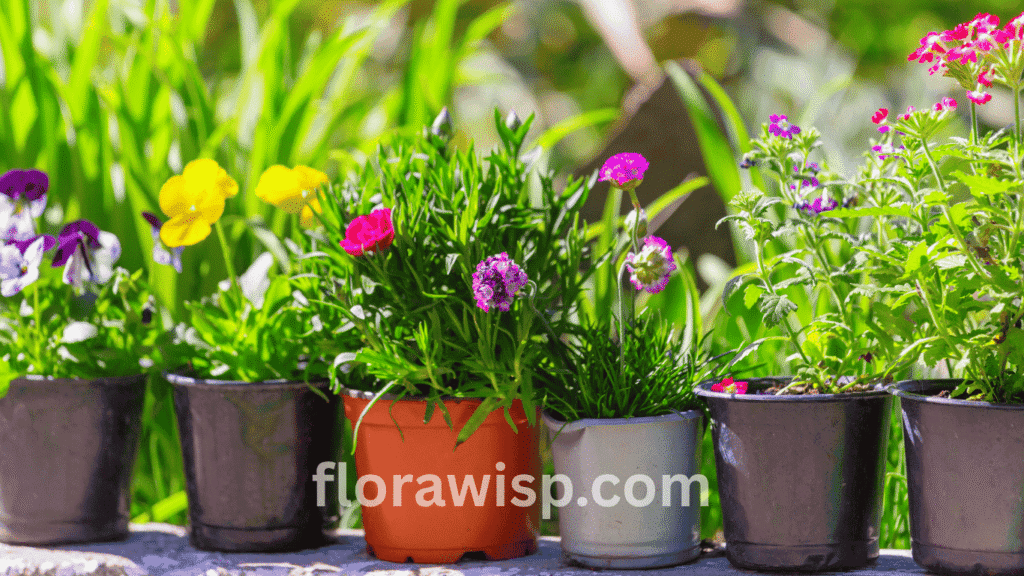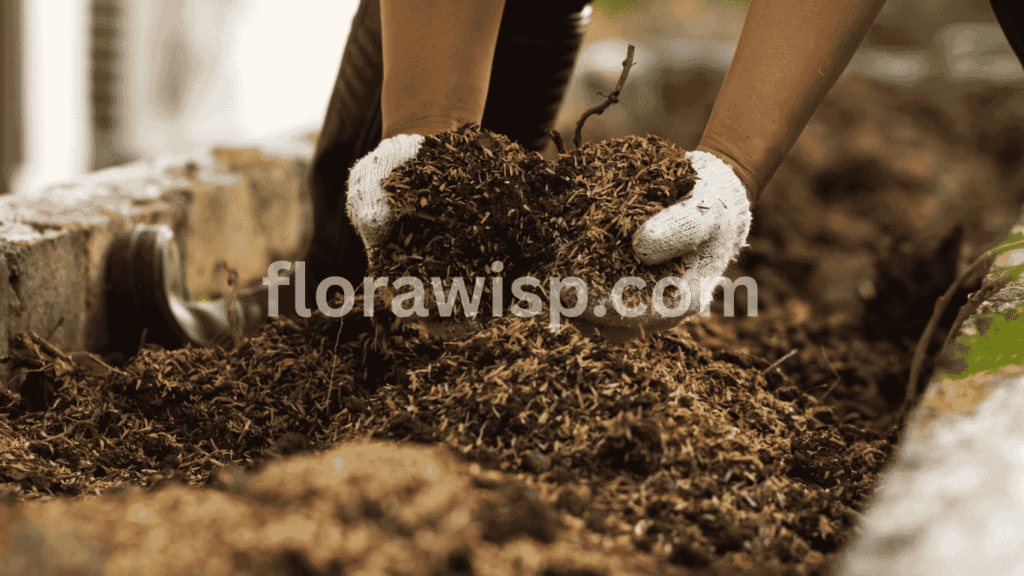Struggling with small or fading marigold blooms? Discover 9 expert-backed marigold care tips I use to revive color, size, and plant health fast. Marigolds have long earned their spot in gardens around the world, not just for their bold color and cheerful presence, but for their hardiness and versatility. Whether you’re a novice gardener or a seasoned green thumb, understanding proper marigold care can unlock even more beauty, blooms, and benefits from these resilient flowers. If you’re just starting out, selecting the right Marigold Seeds is the first step toward growing healthy, vibrant plants.
In This Article
Over the years, I’ve grown various types of marigolds, especially African and French varieties, while experimenting with different soil blends, fertilizers, and companion planting techniques. The difference between a struggling marigold and a thriving one often comes down to knowing a few key care principles. In this guide, I’ll walk you through the care of marigolds in garden beds and containers, offer troubleshooting tips, and reveal both aesthetic and health-related benefits that make marigolds a powerhouse plant.
Why Marigold Care Matters More Than You Think
When you walk through a well-maintained garden, it’s often the marigolds that catch your eye first, bold, brilliant, and brimming with life. But the truth is, marigold care goes far beyond maintaining appearances. These vibrant blooms serve a deeper purpose in the garden, in herbal wellness, and even in how we naturally support biodiversity.
More Than Just a Pretty Flower

As someone who has grown marigolds season after season, I’ve learned that the benefits of marigolds extend well beyond their rich golds and oranges. In my own garden, I’ve consistently planted marigolds alongside tomatoes, bell peppers, and beans. Their strong scent naturally deters aphids, nematodes, and even cabbage loopers, saving me from resorting to synthetic sprays. This natural pest control is one of the most underrated marigold benefits in the garden.
Beyond that, they’re pollinator powerhouses. Bees and butterflies love marigolds. During peak bloom, my beds hum with activity, which improves pollination not just for the marigolds but for my entire vegetable patch. That’s the beauty of integrating marigolds into a well-balanced ecosystem. They work for you in more ways than one.
Medicinal & Herbal Benefits
Marigolds have also long held a reputation in herbal traditions for their healing properties. I often grow a variety of calendula marigolds specifically to harvest petals for teas and topical salves. The marigold benefits here are impressive: they support digestion, soothe inflamed skin, and even help reduce the appearance of minor wounds and rashes.
One personal routine I swear by during allergy season is marigold tea. I dry the petals, steep them in hot water with a bit of honey, and sip it in the evening. It calms both my skin and stomach. This practice, rooted in traditional medicine systems like Ayurveda, has proven more than just anecdotal; it’s been a staple in many healing traditions for centuries.
The Right Care Equals Long-Lasting Blooms
The real magic, however, lies in how properly applied care of marigolds affects their growth. With the right watering habits, regular deadheading, and proper sunlight, marigolds will bloom non-stop from spring through fall. I’ve had individual plants in containers bloom for over four months straight just by adjusting my fertilization and spacing technique. Healthy marigolds also show better resistance to fungal issues like powdery mildew and leaf spot.
What I’ve learned is simple: thoughtful marigold care doesn’t just create a prettier plant it cultivates a healthier, more resilient garden. Whether you’re growing for beauty, balance, or practical benefits, caring for marigolds is a habit every gardener should adopt.
How to take care of marigold plant
Mastering marigold care begins with understanding the subtle differences in varieties and the specific growing conditions they need to thrive across U.S. garden zones. Whether you’re growing marigolds in containers on a Florida patio or sowing them in raised beds in Zone 5, small changes in care can make a big difference. From selecting the right type to adjusting sunlight and watering schedules, proper planning ensures months of brilliant, healthy blooms.
Let’s explore the foundational elements of marigold plant care that set you up for success no matter your region.
Choosing the Right Variety: African vs. French Marigolds
While both African and French marigolds are loved for their color, pest-repelling qualities, and ease of care, they differ in growth habits, climate preferences, and maintenance needs. Here’s a quick comparison:
| Feature | African Marigolds (Tagetes erecta) | French Marigolds (Tagetes patula) |
| Height & Growth | Tall (up to 3 ft), upright | Short (6–12 inches), compact, bushy |
| Bloom Size | Large, globe-like flowers | Smaller, ruffled flowers |
| Ideal USDA Zones | Zones 8–11; heat-tolerant | Zones 3–10; more adaptable |
| Best Use | Garden beds, borders | Containers, edging, companion planting |
| Special Benefits | Strong pest repellent; vibrant impact | High bloom frequency; mildew-resistant |
Both varieties contribute significantly to the benefits of marigolds from African marigold benefits like deer deterrence and soil improvement, to french marigold benefits such as deterring whiteflies and adding pops of color to tight spaces.
Light, Soil & Watering Needs Based on Your Region
Sunlight:
Marigolds need at least 6 hours of direct sunlight daily to bloom profusely. In southern zones (Zones 8–11), provide light afternoon shade to prevent flower burn. In northern climates (Zones 3–6), place them in full sun to maximize bloom cycles.
Soil:
Ideal soil for marigold care is well-drained, with a loamy texture and a pH of 6.0 to 7.0. In clay-heavy soils (common in Midwest regions), amend with compost or coarse sand. If planting in pots, choose a mix that includes perlite for aeration.
Watering Guidelines:
- Water deeply 1–2 times per week in-ground, depending on rainfall.
- For potted marigolds, check the top 1 inch of soil before watering especially in zones with high evaporation like Arizona or Nevada.
- Avoid shallow, daily watering which can encourage disease and shallow roots.
Feeding and Fertilizing Marigolds the Right Way
Over-fertilizing is a common mistake that causes lush foliage but few flowers. For balanced marigold plant care:
- Use a light all-purpose fertilizer (10-10-10) once every 4–5 weeks
- Apply compost tea or fish emulsion in early morning hours to avoid sunburn
- My go-to recipe: 1 part worm castings + 1 part aged compost, worked into the base during planting
For more guidance on choosing the best fertilizer for flowers, check out our detailed guide that compares different options for annuals and perennials.
Pro Tips for Airflow and Disease Prevention
Good airflow is often overlooked in marigold care, yet it’s essential to prevent powdery mildew and fungal diseases especially in humid zones like the Southeast. To maintain healthy airflow:
- Space African marigolds 12–18 inches apart; French marigolds 6–9 inches
- Avoid watering directly on leaves
- Remove faded flowers and yellowing foliage promptly to reduce fungal pressure
This expert approach to how to care for marigolds gives your plants a stronger foundation, fewer pests, and longer bloom time whether you’re growing African giants in a Texas bed or petite French marigolds along a New York window box.
How to Take Care of Marigolds in Pots & Containers
Choosing the Right Container
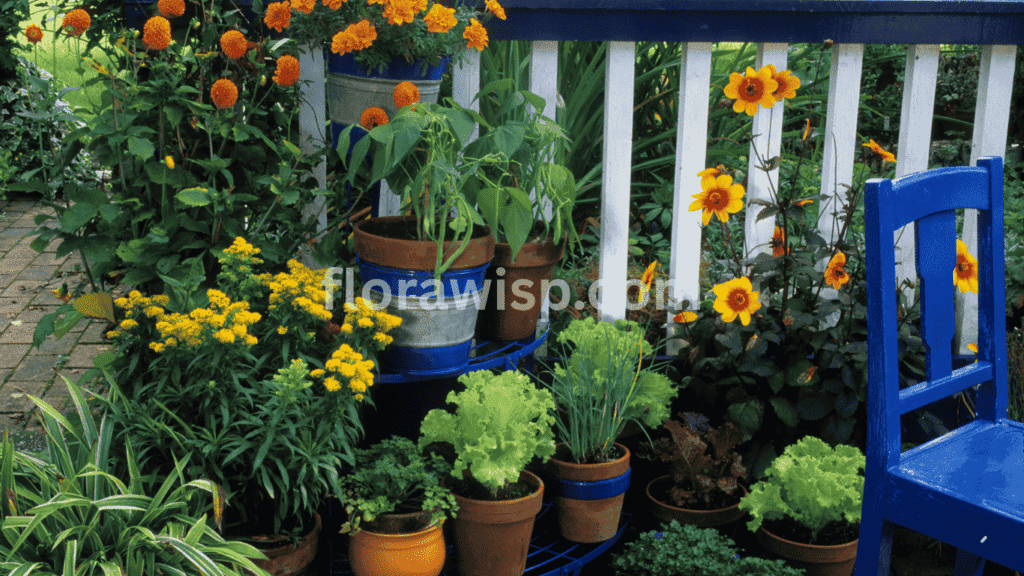
Proper drainage is essential. Choose pots with multiple holes and a minimum 10-inch depth for African marigolds. French varieties can thrive in 6–8 inch containers. Terracotta pots work best for regulating soil moisture. For more detailed tips on container growing, check out our full guide on pot marigold.
Soil Mix for Potted Marigolds
Use a mix of 50% compost, 30% garden soil, and 20% perlite or coarse sand. This ensures moisture retention without waterlogging. In humid climates, increase sand for better aeration to prevent root rot.
Watering & Sunlight Tips for Balcony or Indoor Pots
Water when the top inch of soil feels dry. For indoor pots, place near a south-facing window and rotate weekly for even growth. Outdoor pots should get at least 6 hours of sun daily. Avoid soggy soil at all costs.
Real-Life Case: Rescuing an Overwatered Potted Marigold
One summer, I noticed yellowing leaves and soft stems clear signs of overwatering. I removed the plant, let the roots air-dry, pruned dead foliage, and repotted it in dry soil with extra perlite. Within 7 days, new growth emerged.
Common Mistakes in Marigold Care

Even though marigolds are known for their resilience, successful marigold care goes beyond planting and watering. I’ve worked with marigolds across zones 4 through 10, and over the years, I’ve seen some common yet easily avoidable mistakes that cost gardeners months of healthy blooms. Whether you’re a beginner or an experienced grower, here’s what you need to watch out for:
1. Over-Fertilizing Leads to Leafy Disappointment
One of the most frequent issues in marigold plant care is using too much fertilizer, especially nitrogen-heavy types. This results in lush green leaves but very few flowers. In regions with long growing seasons like Zones 8–11, I recommend feeding lightly with compost or a balanced organic mix every 4–6 weeks. Avoid synthetic boosters that push foliage at the expense of blooms.
2. Neglecting Deadheading Stops the Bloom Cycle
Leaving spent blooms on the plant signals it to go to seed, halting further flowering. In drier climates like Arizona or Nevada, where marigolds bloom rapidly, you’ll need to deadhead every few days. It’s a simple 2-second snip that can double your flowering period.
3. Overcrowding Reduces Airflow and Promotes Disease
Too many gardeners cram marigolds too close, especially in small raised beds or containers. This traps moisture and invites fungal issues, something I see a lot in humid zones like 6–9. French marigolds need at least 6–9 inches between plants; African types need 12–18 inches for proper air circulation.
4. Ignoring Early Fungal Signs
Yellow spots on leaves, powdery white residue, or mushy stems are often shrugged off until the entire plant suffers. If you spot any signs, act fast. Remove affected foliage and treat with neem oil or a mild baking soda spray.
5. Skipping Seasonal Pruning in Wet Conditions
During rainy summers (especially in the Southeast), marigolds can grow too thick, trapping water. Prune excess foliage every few weeks to allow airflow and prevent root or stem rot.
Avoiding these pitfalls will strengthen your overall care of marigolds and help you enjoy longer, healthier blooming in every U.S. zone.
Marigold Benefits in the Garden
When gardeners talk about marigold care, they’re often chasing one of three outcomes: fewer pests, better harvests, and a healthier-looking garden. The truth is, marigolds deliver all three if they’re used the right way. These tough, dependable blooms do far more than decorate. They protect, enhance, and balance the entire garden ecosystem.
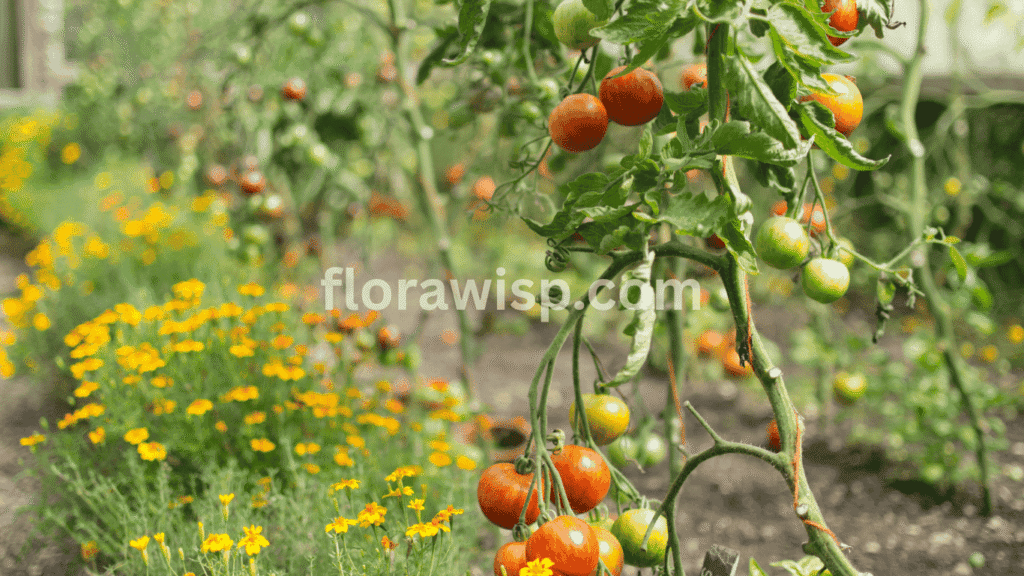
The Silent Pest Barrier That Works
For those frustrated by constant insect problems, marigolds offer a dependable first line of defense. Their natural aroma deters destructive insects like aphids, whiteflies, squash bugs, cabbage loopers, and even nematodes in the soil. But one of the biggest mistakes I see is treating marigolds as an afterthought planting one or two per bed. That’s not enough.
To get the full pest-deterrent effect:
- Plant dense borders or interplant marigolds throughout vegetable rows.
- Focus on French marigolds if your goal is root-level protection (especially important in sandy soils common to Zones 7–10).
- In raised beds or containers (popular in Zones 3–6), marigolds also help repel gnats and thrips that often strike early-season crops.
This approach minimizes the need for chemical sprays and keeps the garden healthier through prevention not just treatment.
Better Blooms and Bigger Harvests
Marigolds don’t just protect, they contribute. When planted beside tomatoes, peppers, beans, cucumbers, and leafy greens, they help reduce competition from weeds and protect roots with their dense, sun-loving foliage. Their low-growing structure is ideal for shading soil, preserving moisture during hot spells especially useful in southern zones where evaporation is rapid.
They also attract pollinators like bees and beneficial flies, increasing yield and fruit quality in cross-pollinated vegetables. I’ve seen tomato production rise by nearly 20% in backyard gardens where marigolds were integrated properly.
The Real Beauty Most Gardeners Seek
Most gardeners don’t want color alone; they want low-maintenance beauty that keeps the garden looking full and healthy, even when vegetables fade or gaps open. Marigolds deliver that in spades.
- Their bloom cycle lasts well into late summer or fall, depending on the zone.
- They fill space quickly and hide bare spots without competing aggressively for nutrients.
- Dwarf French varieties thrive in pots and small spaces, while taller African types shine in open borders.
By understanding the real strengths of marigolds and how to pair them with your climate and crops you’ll get more than a flower. You’ll get a workhorse that earns its spot in every corner of the garden.
Health & Herbal Benefits of Marigolds
Marigold Tea for Immunity and Digestion

Harvest petals when blooms are fresh. Dry them in shade and store in an airtight jar. Steep 1 tsp in hot water for 5–7 minutes. I drink it mid-morning for digestive ease.
Skincare, Anti-Inflammatory, and Healing Salves
African marigold benefits include potent anti-inflammatory compounds. I make a salve with beeswax and infused calendula oil for insect bites and minor burns. It’s my go-to summer remedy.
Cautions and Considerations
People allergic to ragweed may react to marigolds. Avoid consumption during pregnancy unless approved by a healthcare provider.
Seasonal Marigold Care Tips: A Gardener’s Guide by Zone
As a lifelong gardener who’s grown marigolds in everything from raised beds in Zone 5 to balcony pots in Zone 9b, I’ve learned one thing: seasonal care makes or breaks marigold performance. You can’t treat spring and summer the same, and you definitely can’t ignore your USDA zone. Here’s how I guide my marigolds through the year for lasting blooms and reliable seed harvests.
Spring: Timing Is Everything
In cooler zones (3–6), I start seeds indoors 6–8 weeks before the last frost, usually early March. A heated seedling mat helps, especially if your indoor temps hover below 70°F. In warmer zones (7–11), direct sowing is an option as soon as soil temperatures reach 65°F consistently.
Tips:
- Use lightweight potting soil with good drainage.
- Harden off seedlings over 5–7 days before transplanting.
- Plant in full sun once nighttime temps stay above 55°F.
Summer: Protect and Prolong Blooms
Marigolds thrive on sunlight, but excessive heat can backfire. In southern zones (8–11), I use morning sun + afternoon shade strategies to prevent bloom burn. Mulching around the base conserves moisture and stabilizes soil temperatures during heatwaves.
Tips:
- Deadhead faded blooms twice a week to promote new flushes.
- Apply liquid seaweed or compost tea every 10–14 days.
- Water early in the day, aiming for deep, infrequent soaking.
Fall: Seed Saving and Soil Reset
As nights cool down in September and October, I let my healthiest blooms go to seed. The trick? Harvest seed heads just as they begin to dry too soon and they won’t mature; too late and they’ll drop.
Tips:
- Store seeds in labeled paper envelopes in a dry, cool space.
- Compost old marigold plants to enrich next season’s soil.
- In Zones 9–11, marigolds may overwinter mulch heavily and reduce watering.
Winter: Planning and Protection
In frosty zones, marigolds die back, but your prep now sets up spring success. I use this time to test soil, organize seeds, and amend beds with compost.
Tips:
- Avoid heavy watering in winter-active zones.
- If overwintering indoors, place pots in a bright, cool window and reduce feeding.
My 7-Day Marigold Revival Plan: How I Saved a Fading Plant
Last summer, after a week of unexpected rain in my Zone 6 backyard, one of my French marigolds started wilting yellow leaves, stunted buds, and mushy stems. Here’s exactly how I brought it back to life in seven days.
Day 1 – Diagnosis:
The first thing I noticed was yellowing foliage and drooping blooms. I gently pressed my finger into the soil and found it overly soggy, confirming my suspicion of overwatering and poor drainage.
Day 2 – Root Check:
I carefully uprooted the plant and examined the roots. They were brown and emitted a sour smell a clear sign of root rot. I trimmed off the dead roots with pruning snips while wearing gloves to keep things clean.
Day 3 – Disinfection:
To treat the affected root zone, I soaked the base in a mixture of 1 part hydrogen peroxide to 10 parts water for about 3 minutes. After that, I let the roots air-dry for an hour before replanting.
Day 4 – Replanting:
I prepared a breathable clay pot with a well-draining 50/50 mix of perlite and composted soil. This ensured the roots had room to breathe while still getting access to nutrients.
Day 5 – Light & Recovery:
Instead of placing the plant in direct sun, I chose a spot with bright but indirect light for about 6 hours a day. During this recovery phase, I withheld water and fertilizer entirely to avoid further stress.
Day 6 – Monitoring:
By now, I started seeing the first signs of recovery. Tiny new leaf buds began emerging. The soil still held enough moisture, so I avoided watering again.
Day 7 – Feeding:
I gave the plant a diluted compost tea about one-quarter strength early in the morning. There were no signs of yellowing or wilting, and healthy new growth had clearly resumed.
Tools I Used:
- Pruning snips
- 3% hydrogen peroxide
- Organic compost tea
- Breathable clay pot
- Soil thermometer and moisture meter
Bonus Tips Based on USDA Zones:
- In humid zones (6–9), root rot happens fast and always check pot drainage holes.
- In arid zones (9–11), overwatering is rare, but compacted soil can trap water using perlite-heavy mixes.
- In colder zones, plants stressed by temperature swings recover slower. Keep them shielded from early morning frost or drafts.
This exact routine helped me save not just one, but four marigolds that were close to being tossed out. It’s not about fancy tools it’s about attentiveness, timing, and treating marigolds like the resilient, responsive flowers they truly are.
FAQs
Q. How often should marigolds be watered in pots?
When it comes to marigold care in containers, consistent watering is key especially during the warm months. In most U.S. zones, potted marigolds should be watered every 2 to 3 days, or whenever the top inch of soil feels dry. In hotter climates (Zones 8–11), daily checks are essential, particularly during heatwaves. Always water at the base to avoid fungal issues and ensure excess water drains freely to prevent root rot.
Q. Can marigolds survive indoors?
Yes, marigolds can thrive indoors with the right setup. For successful indoor marigold care, place your pot in a sunny south- or west-facing window that gets at least 6 hours of direct light daily. Use a container with excellent drainage and rotate the pot every few days to encourage even growth. Keep indoor temperatures between 65–75°F, and water only when the soil is dry to the touch. Avoid overwatering, which is the most common indoor mistake.
Q. When is the best time to plant marigolds?
The ideal planting time for marigolds depends on your USDA zone. In Zones 3–7, start seeds indoors 6–8 weeks before the last spring frost, then transplant after soil temperatures stay above 65°F. In warmer zones (8–11), direct sowing in early spring works well. Proper marigold plant care begins with timing the plant too early, and cold snaps can damage seedlings. Monitor your local frost dates closely for the best results.
Q. Do marigolds keep bugs away?
Absolutely, marigold care isn’t just about the blooms. These plants are renowned for their ability to repel harmful garden pests naturally. Both African and French marigolds release compounds from their roots and foliage that deter aphids, whiteflies, squash bugs, nematodes, and even mosquitoes. For maximum effect, interplant marigolds densely among vegetables like tomatoes, cabbage, and peppers. This helps reduce pest pressure and limits the need for chemical intervention.
Conclusion:
Caring for marigolds isn’t just about maintaining a flower, it’s about building a resilient, vibrant, and balanced garden. Whether you’re growing them in pots on a sunny balcony or tucked between your vegetables in raised beds, marigolds offer more than color.
With consistent watering, proper sunlight, and seasonal attention, they reward you with long-lasting blooms, natural pest defense, and even herbal uses. As someone who has grown marigolds across different zones, I can say with confidence: they adapt, they protect, and they inspire. Start with a few, learn their rhythms, and soon you’ll find yourself planting them year after year. Mastering marigold care is a small investment for a garden that gives back generously in return.
References
University of California Agriculture & Natural Resources – Integrated Pest Management (IPM): Marigolds
Missouri Botanical Garden – Tagetes (Marigold) Profile
North Carolina State Extension – Calendula officinalis
Gardener, M.Sc. Horticulture
Elara Bennet is a gardening writer from Austin, TX, passionate about sustainable lawns and blooms. Read full bio →



